 W
WThe Aérotrain was an experimental Tracked Air Cushion Vehicle (TACV), or hovertrain, developed in France from 1965 to 1977 under the engineering leadership of Jean Bertin (1917–1975) – and intended to bring the French rail network to the cutting edge of land-based public transportation.
 W
WThe Aerowagon or Aeromotowagon was an experimental high-speed railcar fitted with an aircraft engine and propeller traction invented by Valerian Abakovsky, a Soviet engineer from Latvia. It produced speeds of up to 140 kilometres per hour. The Aerowagon was originally intended to carry Soviet officials.
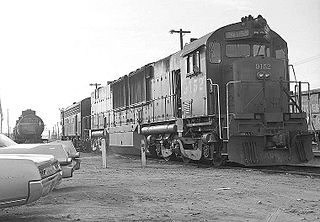 W
WThe ALCO C-643DH, also known as the Century 643DH, was a twin-engine diesel-hydraulic locomotive, the first diesel-hydraulic road switcher built in the United States. It had a C-C wheel arrangement and generated 4,300 horsepower (3,200 kW). Only three were built, all for Southern Pacific Railroad in 1964 (#9018–#9020). The Alco C-643DHs joined 21 Krauss-Maffei ML-4000 diesel-hydraulics already on the Southern Pacific's roster. They spent most of their service lives in the flat San Joaquin Valley in California.
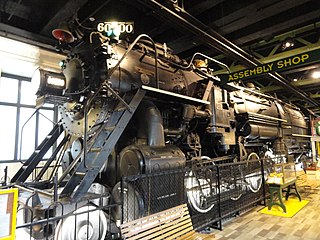 W
WBaldwin 60000 is an experimental steam locomotive built by the Baldwin Locomotive Works in Eddystone, Pennsylvania, in 1926, during the height of the railroading industry. It received its number for being the 60,000th locomotive built by Baldwin.
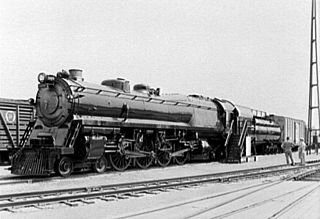 W
WThe Baltimore and Ohio Railroad's sole Class N-1 steam locomotive, #5600 George H. Emerson, was the first duplex locomotive and the first 4-4-4-4 locomotive ever built. It was designed and built by the railroad's own shops in 1937. The rear set of cylinders were placed beside the firebox. This allowed the locomotive's wheelbase to remain the same. The space beside the firebox was hot and dirty, which caused premature cylinder wear, and the placement of the cylinders limited the size of the firebox. These same problems occurred on the PRR Q1, which also placed the rear cylinders by the firebox. It was built by the B&O's own Mount Clare Shops in 1937 however it had problems with the sizes of the cylinders facing the other direction. In 1943 no. 5600 was retired from service. The locomotive was then scrapped in 1950.
 W
WBB 63413 PLATHEE is a hybrid locomotive that was used for testing on the French rail operator SNCF. PLATHEE is an acronym for "Platform for Energy- Efficient and Environmentally Friendly Hybrid Trains".
 W
WThe Bennie Railplane was a form of rail transport invented by George Bennie (1891–1957), which moved along an overhead rail by way of propellers. Bennie, born at Auldhouse, near Glasgow, Scotland began work on the development of his railplane in 1921. In 1929-1930 he built a prototype on a trial stretch of track over a 130-yard (119-metre) line at Milngavie, off the Glasgow and Milngavie Junction Railway, with one railplane car to demonstrate the system to potential clients. The car ran along an overhead monorail, stabilised by guide rails below. It moved by propellers powered by on-board motors. It was intended to run above conventional railways, separating faster passenger traffic from slower freight traffic. Bennie believed his railplane cars had the capability of travelling up to 120 mph (193 km/h) and would offer a "fast passenger and mails and perishable goods service". Slow and heavy goods freight and local passenger services would continue on the traditional rail service below. Each car could carry a maximum of 48 people; the prototype had seating for fewer.
 W
WBritish Railways 10100 was an unusual experimental diesel locomotive known informally as The Fell Diesel Locomotive. It was the joint production of Davey Paxman & Co, Shell Refining & Marketing Co and Lt-Col L. F. R. Fell, built for them by the London, Midland and Scottish Railway at Derby. Sir Harry Ricardo was also involved. By the time it emerged in 1950, nationalisation had taken place and it carried British Railways livery. The locomotive had six diesel engines, four of them used for traction. There were two auxiliary engines, both of which were 150 hp (110 kW) AEC 6-cylinder units, and these drove the pressure-chargers for the main engines and the purpose of this arrangement was to enable the main engines to deliver very high torque at low crankshaft speed.
 W
WBritish Rail 18000 was a prototype mainline gas turbine-electric locomotive built for British Railways in 1949 by Brown, Boveri & Cie. An earlier gas-turbine locomotive, 18100, had been ordered from Metro-Vick by the Great Western Railway but construction was delayed due to World War II; a second, 18000, was thus ordered from Switzerland in 1946. It spent its working life on the Western Region of British Railways, operating express passenger services from Paddington station, London.
 W
WThe APT-E, for Advanced Passenger Train Experimental, was the prototype Advanced Passenger Train tilting train unit. It was powered by gas turbines, the only multiple unit so powered that was used by British Rail. The APT-E consisted of two driving power cars and two trailer cars. Each power car was equipped with four Rover- built Leyland 2S/350 gas turbines, these initially produced 300 HP each but were progressively uprated to 330 HP. Two GEC 253AY nose suspended traction motors provided the traction on the leading bogies. The vehicles were manufactured from aluminium, approx 70 ft long (21 m) with articulated bogies between them.
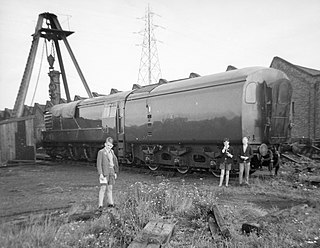 W
WGT3, meaning Gas Turbine number 3, was a prototype mainline gas turbine locomotive built in 1961 by English Electric at their Vulcan Foundry in Newton-le-Willows to investigate the use of its gas turbines in rail traction applications. It was designed by English Electric engineer J. O. P. Hughes in a project that started in the early 1950s. Externally it resembled a steam tender locomotive, but the tender carried kerosene fuel. The designer said the traditional chassis and mechanical transmission avoided complications with relatively untried technologies for bogies and electrical transmission.
 W
WHS4000 Kestrel was a prototype high-powered mainline diesel locomotive built in 1967 by Brush Traction, Loughborough as a technology demonstrator for potential future British Rail and export orders. The locomotive number is a combination of the initials of Hawker Siddeley and the power rating of its Sulzer diesel engine, making it the most powerful locomotive built by the company.
 W
WThe Chesapeake and Ohio class M-1 was a fleet of three steam turbine locomotives built by the Baldwin Locomotive Works for the Chesapeake and Ohio Railway in 1947–1948 for service on the Chessie streamliner. As diesel locomotives became more prevalent following World War II, the C&O was one of several railroads loath to abandon coal as a fuel source, and saw steam turbine technology as a possible alternative to diesel. At the time of its construction it was the longest single-unit locomotive in the world.
 W
WThe DRG H 02 1001 was a remarkable high-pressure steam locomotive, built by the engineering firm of Schwarzkopff to the design of Dr L. Löffler. The aim was not only to improve fuel economy—the usual reason for adopting high steam pressures—but also to increase the amount of power that could be produced within the German loading gauge.
 W
WH17-206 was a high pressure steam locomotive built in Germany in 1925 by Henschel, on the Schmidt system. Rebuilt from a Prussian S 10.2.
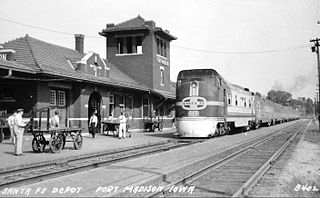 W
WElectro-Motive Corporation produced five 1800 hp B-B experimental passenger train-hauling diesel locomotives in 1935; two company-owned demonstrators, #511 and #512, the Baltimore and Ohio Railroad's #50, and two units for the Atchison, Topeka and Santa Fe Railway, Diesel Locomotive #1. The twin engine power unit layout and multiple unit control systems developed with the B-B locomotives were soon adopted for other locomotives such as the Burlington Route's Zephyr locomotives built by the Budd Company in 1936 and EMC's own EMD E-units introduced in 1937. The B-B locomotives worked as proof-of-concept demonstrators for diesel power with the service loads of full size trains, breaking out of its niche powering the smaller custom Streamliners.
 W
WAn EMD SW8 is a diesel switcher locomotive manufactured by General Motors Electro-Motive Division and General Motors Diesel between September 1950 and February 1954. Power is supplied by an EMD 567B 8-cylinder engine, for a total of 800 hp (600 kW). A total of 309 of this model were built for United States railroads and 65 for Canadian railroads. Starting in October 1953 a number of SW8s were built with either the 567BC or 567C engine.
 W
WThe EMD F69PHAC was an experimental locomotive built in 1989 in a joint venture between EMD and Siemens. It was designed to test AC locomotive technology. Only two examples of this locomotive were made. The engine used the same carbody as the EMD F40PHM-2 and EMD F40PHM-3, with just a few spotting differences.
 W
WAn EMD GP40X is a 4-axle road switcher diesel-electric locomotive built by General Motors Electro-Motive Division between December 1977 and June 1978. Power for this unit was provided by a turbocharged 16-cylinder EMD 645F engine which could produce 3,500 horsepower (2,610 kW). 23 examples of this locomotive were built for North American railroads. This unit was a pre-production version meant to test technologies later incorporated into EMD's 50-series locomotives GP50 and SD50. Ten GP40X were delivered with an experimental HT-B truck design that became an option on the production GP50.
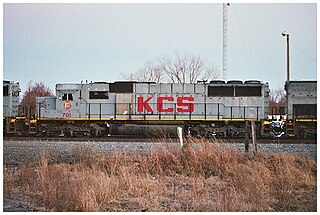 W
WAn EMD SD40X is a 6-axle experimental road switcher diesel-electric locomotive built by General Motors Electro-Motive Division between 1964 and 1965. 9 examples of this locomotive were built for test purposes to test the new 645-series prime mover. After testing, eight were sold to the Union Pacific Railroad and one example to the Gulf, Mobile and Ohio Railroad. This locomotive is an experimental testbed for the production SD40, but built on the shorter SD35 frame. This locomotive was also known as an SD35X.
 W
WAn EMD SD45X is a 6-axle experimental diesel-electric locomotive built by General Motors Electro-Motive Division between June 1970 and February 1971. Power was provided by an EMD 645E3A 20-cylinder engine which generated 4,200 horsepower (3,130 kW). 7 examples of this locomotive model were built for American railroads. 6 of these units would end up in service with Southern Pacific Railroad. One was rebuilt in 1980 by Morrison-Knudsen into an SD45Xm with a long hood from a scrapped DD35.
 W
WThe EMD SD89MAC was a 4,500 horsepower (3,360 kW) C-C diesel-electric locomotive produced by General Motors Electro-Motive Division. Along with the SD80MAC and SD90MAC, the SD89MAC was one of the largest single-engine locomotives produced by EMD. The SD89MAC featured radial steering trucks and an isolated cab which was mounted on shock absorbers to reduce vibration. The SD89MAC used AC traction motor technology. Like the SD90MAC, it was a hood unit fitted with a safety cab and has an enlarged radiator section, nearly the entire width of the locomotive, which makes it easy to spot. The frame of GM 92, the only SD89MAC ever built, has since been retrofitted with a different engine for Tier 4 compliance tests conducted by EMD.
 W
W"Fowler's Ghost" is the nickname given to an experimental fireless 2-4-0 steam locomotive designed by John Fowler and built in 1861 for use on the Metropolitan Railway, London's first underground railway. The broad gauge locomotive used exhaust recondensing techniques and a large quantity of fire bricks to retain heat and prevent the emission of smoke and steam in tunnels.
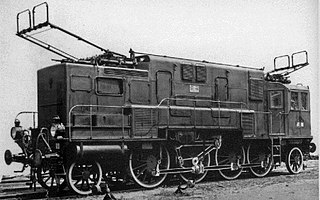 W
WThe FS Class E.471 locomotives were prototype three-phase AC electric locomotives designed for the Italian State Railways (FS). They constituted the first Italian experiment in using a phase converter. The final goal was to power them with single-phase alternating current, constituting the first case of a European locomotive of this type designed according to modern criteria. However, the difficulty of the development, and political interference, led to the abandonment of the project.
 W
WThe General Electric steam turbine locomotives were two steam turbine locomotives built by General Electric (GE) for Union Pacific (UP) in 1938. The two units were streamlined, 90 feet 10 inches (27.69 m) in length, capable of producing 2,500 horsepower (1,900 kW), and reputedly able to attain speeds of 125 miles per hour (201 km/h). Stylistically, they resembled UP's Pullman-designed M-10003 through M-10006 power units and contemporary Electro-Motive Corporation (EMC) diesel designs.
 W
WThe GER Class A55 or Decapod was an experimental steam locomotive with an 0-10-0T wheel arrangement designed by James Holden for the Great Eastern Railway. It was the first ten-coupled steam locomotive in Great Britain.
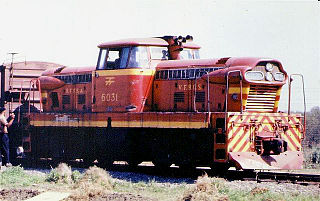 W
WThe GMD GMDH-1 was an experimental diesel-hydraulic switching locomotive built by General Motors Diesel of Canada. Four examples were built. It was a double-ended, center-cab design. The first two locomotives were each fitted with a pair of 6-cylinder Detroit Diesel series 110 engines giving 600 horsepower (450 kW), while the second pair had two series 71 engines developing 800 hp (600 kW).
 W
WThe GMD GMDH-3 was an experimental diesel-hydraulic switching locomotive built in January 1960 by General Motors Diesel of Canada. Only one example was built, with GMD serial number A1813. The locomotive was essentially the GMDH-1 design but with only a single hood, a single engine and an end cab, mounted on a six-wheel chassis.
 W
WA high-pressure steam locomotive is a steam locomotive with a boiler that operates at pressures well above what would be considered normal. In the later years of steam, boiler pressures were typically 200 to 250 psi. High-pressure locomotives can be considered to start at 350 psi (2.41 MPa), when special construction techniques become necessary, but some had boilers that operated at over 1,500 psi (10.34 MPa).
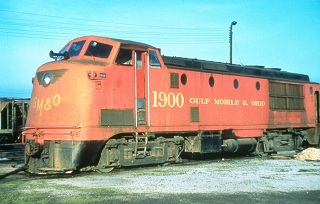 W
WThe Ingalls 4-S was an experimental American locomotive built by Ingalls Shipbuilding immediately after World War II. Intended to be the first of many Ingalls-built locomotives, it wound up being the only one ever built by the company. It served on the Gulf, Mobile and Ohio Railroad (GM&O) until 1966, when it was retired; it was scrapped the following year.
 W
WThe JetTrain was an experimental high-speed passenger train concept created by Bombardier Transportation in an attempt to make European-style high-speed service more financially appealing to passenger railways throughout North America. It was designed to use the same LRC-derived tilting carriages as the Acela Express trains that Bombardier built for Amtrak in the 1990s, which used all-electric locomotives. Unlike the Acela, powered electrically by overhead lines, the JetTrain would have used a combination of a 4,000-horsepower (3.0 MW) gas-turbine engine, a low-power diesel engine, a reduction gearbox, and two alternators to power electric traction motors. This would have allowed it to run at high speeds on non-electrified lines.
 W
WThe Krauss-Maffei ML 4000 is a road switcher diesel-hydraulic locomotive, built between 1961 and 1969 by German manufacturer Krauss-Maffei in Munich, Germany. It generated 3,540 horsepower (2,640 kW) from two Maybach V16 engines. 37 examples were built for two North American railroads and one South American railroad.
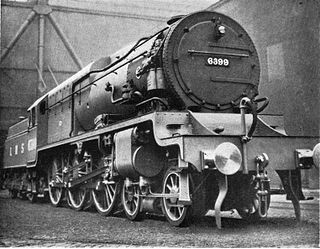 W
WThe London Midland and Scottish Railway (LMS) No. 6399 Fury was an unsuccessful British experimental express passenger locomotive. The intention was to save fuel by using high-pressure steam, which is thermodynamically more efficient than low-pressure steam.
 W
WThe LNER W1 No. 10000 was an experimental steam locomotive fitted with a high pressure water-tube boiler. Nigel Gresley was impressed by the results of using high-pressure steam in marine applications and so in 1924 he approached Harold Yarrow of shipyard & boilermakers Yarrow & Company of Glasgow to design a suitable boiler for a railway locomotive, based on Yarrow's design.
 W
WThe M-497 was an experimental jet-powered railcar test bed of the New York Central Railroad, developed and tested in 1966 in the United States. Two second-hand General Electric J47-19 jet engines, originally used as boosters for the Convair B-36 Peacemaker intercontinental bomber, were mounted atop an existing Budd Rail Diesel Car, an RDC-3 of coach and baggage-mail configuration which had received a streamlined front cowling. The construct was then successfully sent on test runs over the existing tracks between Butler, Indiana, and Stryker, Ohio. The line had been chosen for its arrow-straight layout and good condition, but otherwise unmodified track. On July 23, 1966, the car reached a speed of 183.68 mph (295.6 km/h), an American rail speed record that still stands today.
 W
WThe Midland Railway's Paget locomotive, No. 2299, was an experimental steam locomotive constructed at its Derby Works in 1908 to the design of the General Superintendent Cecil Paget. As the Midland shrouded the locomotive in secrecy, there is only one known photograph, which was not released until after The Grouping of 1923.
 W
WA Naphthalene locomotive was tested in France in 1913. It was built by Schneider-Creusot for use in their own plant.
 W
WThe Norfolk and Western Railway 2300, also known as the "Jawn Henry", or “Jawn henreh”, was a single experimental steam turbine locomotive of the Norfolk and Western Railway. The N&W placed it in class TE. It was nicknamed Jawn Henry after the legend of John Henry, a rock driller who famously raced against a steam drill and won, only to die immediately after. It was designed to demonstrate the advantages of steam turbines espoused by Baldwin Chief Engineer Ralph P. Johnson. It was the longest steam locomotive that was ever built. The unit looked similar to the C&O turbines but differed mechanically; it was a C+C-C+C with a Babcock & Wilcox water-tube boiler with automatic controls. The boiler controls were sometimes problematic, and coal dust and water got into the electric traction motors. Number 2300 was retired, stricken from the N&W roster on January 4, 1958 and scrapped later that same year.
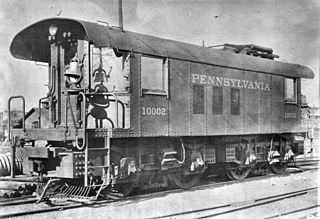 W
WThe Pennsylvania Railroad's class AA1 comprised two experimental electric locomotives constructed in 1905 by the company's own Altoona Works with the assistance of Westinghouse. Intended as testbeds as the PRR began its electrification project, both locomotives remained service into the 1930s.
 W
WThe Pennsylvania Railroad's class DD2 electric locomotive was a single prototype locomotive never placed into series production. It was intended as an improved and simplified GG1 for use on the planned, but never built, extension of the PRR's electrification west of Harrisburg, Pennsylvania. The one locomotive produced was numbered #5800 and used in regular Baltimore tunnel helper service until it was scrapped in September 1962.
 W
WThe Pennsylvania Railroad's class FF1 was an American electric locomotive, a prototype numbered #3931 and nicknamed "Big Liz". It was built in 1917 to haul freight trains across the Allegheny Mountains where the PRR planned to electrify. "Big Liz" proved workable but too powerful for the freight cars of the time with its 4600 available horsepower and astonishing 140,000 lbf (620 kN) of tractive effort. Pulling the train it regularly snapped couplers and when moved to the rear as a pusher its force was sufficient to pop cars in the middle of the train off the tracks.
 W
WThe Pennsylvania Railroad's class O1 comprised eight experimental boxcab electric locomotives built in 1930 and 1931. They were built in preparation for the New York to Washington Electrification project. They had the wheel arrangement classified as 4-4-4 in the Whyte notation. Although successful, they were not powerful enough for the railroad's increasingly heavy trains. For production, the PRR chose to concentrate on the P5 class, effectively an enlarged and more powerful version of the O1 with an additional pair of driving wheels.
 W
WThe Pennsylvania Railroad's class Q2 comprised one prototype and twenty-five production duplex steam locomotives of 4-4-6-4 wheel arrangement.
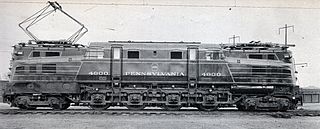 W
WThe Pennsylvania Railroad's class R1 comprised a single prototype electric locomotive constructed in 1934 by the Baldwin Locomotive Works of Philadelphia, Pennsylvania, USA, with the electrical equipment by Westinghouse.
 W
WThe PRR S1 class steam locomotive was a single experimental duplex locomotive of the Pennsylvania Railroad. It was designed to demonstrate the advantages of duplex drives espoused by Baldwin Chief Engineer Ralph P. Johnson. It was the longest and heaviest rigid frame reciprocating steam locomotive that was ever built. The streamlined Art Deco styled shell of the locomotive was designed by Raymond Loewy.
 W
WThe Pennsylvania Railroad's class S2 was a steam turbine locomotive designed and built in a collaborative effort by Baldwin Locomotive Works and Westinghouse Electric & Manufacturing Company, as an attempt to prolong the dominance of the steam locomotive by adapting technology that had been widely accepted in the marine industry. One was built, #6200, delivered in September 1944. The S2 was the sole example of the 6-8-6 wheel arrangement in the Whyte notation, with a six-wheel leading truck, eight driving wheels, and a six-wheel trailing truck. The S2 used a direct-drive steam turbine provided by the Westinghouse Electric & Manufacturing Company, geared to the center pair of axles with the outer two axles connected by side rods; the fixed gear ratio was 18.5:1. Such design was to prevent energy loss and S2 achieved a mechanical efficiency of 97% which means only 3% of steam energy was lost within the propulsion equipment. The disadvantage of direct-drive steam turbine was that the turbine could not operate at optimal speeds over the locomotive's entire speed range. The S2 was the largest, heaviest and fastest direct-drive turbine locomotive design ever built.
 W
WPennsylvania Railroad's Odd D #10003 was an experimental electric locomotive built in 1907 by Baldwin and Westinghouse. It had a 4-4-0 wheel arrangement in the Whyte notation, or 2-B in the AAR scheme. On the PRR, class D was assigned to 4-4-0 locomotives. Production classes of locomotive were assigned a number after the letter, but one-off locomotives were simply designated "Odd".
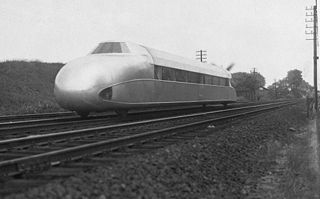 W
WThe Schienenzeppelin or rail zeppelin was an experimental railcar which resembled a Zeppelin airship in appearance. It was designed and developed by the German aircraft engineer Franz Kruckenberg in 1929. Propulsion was by means of a pusher propeller located at the rear: it accelerated the railcar to 230.2 km/h (143 mph) setting the land speed record for a petrol powered rail vehicle. Only a single example was ever built, which due to safety concerns remained out of service and was finally dismantled in 1939.
 W
WSNCF 040.DF was a class of one prototype diesel-hydraulic locomotive built for the SNCF built in 1952 by Renault.
 W
WSNCF 232.P.1 was an experimental prototype high-pressure steam locomotive ordered by the Chemins de fer du Nord, but delivered to the Société nationale des chemins de fer français (SNCF) in 1939. It was the first and only member of SNCF's first class of 4-6-4 or Hudson type of locomotives.
 W
WSNCF CC 70000 was a class of two prototype high power diesel-electric locomotives numbered CC 70001 and 70002. They were built at the same time as a diesel-hydraulic version, BB 69000.
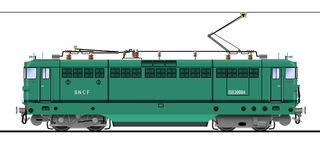 W
WThe SNCF class BB 20004 locomotive was a dual-voltage test-bed locomotive transformed from the damaged BB16540 in 1959. After the end of its test period in 1969 it was reinstated with its original equipment under its original number BB16540.
 W
WThe Leader was a class of experimental 0-6-0+0-6-0 articulated steam locomotive, produced in the United Kingdom to the design of the innovative engineer Oliver Bulleid. The Leader was an attempt to extend the life of steam traction by eliminating many of the operational drawbacks associated with existing steam locomotives. It was intended as a replacement for the ageing fleet of M7 class tank engines still in operation on the Southern Railway (SR). Design work began in 1946 and development continued after the nationalisation of the railways in 1948, under the auspices of British Railways (BR).
 W
WA steam turbine locomotive is a steam locomotive which transmits steam power to the wheels via a steam turbine. Numerous attempts at this type of locomotive were made, mostly without success. In the 1930s this type of locomotive was seen as a way both to revitalize steam power and challenge the diesel locomotives then being introduced.
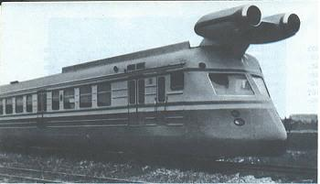 W
WA turbojet train is a train powered by turbojet engines. Like a jet aircraft, but unlike a gas turbine locomotive, the train is propelled by the jet thrust of the engines, rather than by its wheels. Only a handful of jet-powered trains have been built, for experimental research in high-speed rail.
 W
WThe Railpower GG20B Green Goat is a low-emissions diesel hybrid switcher locomotive built by Railpower Technologies Corp. It is powered by a single Caterpillar C9 six cylinder inline engine developing 300 horsepower (224 kW), which is also connected to a large battery bank where both sources combine for a total power output of 2,000 horsepower (1,490 kW). To date, there have been more than 50 GG20B electric-diesel electric hybrid switchers manufactured since their first introduction in 2004.